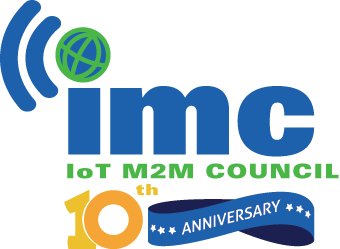Why 2023 will be a year of seismic change for IoT
- November 30, 2022
- Steve Rogerson

The IoT industry is facing seismic changes next year as technologies enable a power shift from mobile network operators (MNOs) to the enterprise, according to cellular IoT connectivity pioneer Eseye in its fourth annual predictions.
Over the past year eSIMs have solved the interoperability problems, allowing choice between mobile networks. Now users with eSIM-enabled IoT devices have the ability to switch networks, reducing ties to MNOs to which they may have signed up. This evolution has been the catalyst for five significant trends in the year ahead:
- The MNO proprietary lock-in finally cracks due to increased choice and the hyperscaler threat: As eSIMs become the default technology for IoT devices, the 40-year MNO proprietary lock-in has finally broken. At the same time, hyperscalers such as Amazon, Microsoft and Google are investing heavily in IoT, connectivity and networking. With power switching to enterprises, IoT use cases are being designed around the user and not technology. In 2023, MNOs will change their business models to offer their services as part of mobile virtual network operators (MVNOs), which will be better aligned and more seamlessly integrate with the hyperscalers’ offerings. For the enterprise, this means more global flexibility when choosing their connectivity.
- Interoperability between public and private networks will become a priority: Big enterprises are starting to build towards LTE private networks and in 2023 there will be increased focus on roaming to and from private networks as adoption grows. However, this places more complicated demands on connectivity. And while MVNOs have solved the problem of switching between different networks, in this new environment they must also pay attention to cross-network switching. This means MVNOs who offer rules-based switching between public and private networks – while still maintaining a single management pane, common APIs and consolidated billing – will become the dominant players in this ecosystem.
- Ascendance of network agnostic and multi-RAT: As modem costs drop, there is increased interest in using multiple radio access types (RATs) and different network providers, delivering a mix of options to optimise connectivity of IoT deployments. There are also incredible innovations happening in areas such as low Earth orbiting (LEO) satellite constellations and device-to-cloud satellite communications. As these different types of networks increase, devices will need better functionality and in 2023 there will be more devices with multiple modes of connectivity to work wherever they find themselves. The next generation MVNO must embrace a multi-RAT design strategy and seamlessly support and optimise networks across cellular, wifi, LoRaWan, satellite and more.
- Consumer and enterprise IoT use cases converge to create connectivity challenges: Previously disparate enterprise and consumer models are blending across industries such as healthcare, smart energy, electric vehicles and others. This will result in the rise of MVNOs who will enable this integration in 2023, providing connectivity that bridges the two worlds.
- IoT starts and ends with the device: Today, devices need embedded intelligence to operate in different environments, detect connectivity, and use the right components and protocols. This often requires complicated configuration at the design stage and in 2023 hardware will be as important, if not more important, than software. Devices need to have connectivity and flexibility built in by design so they can adapt as the market evolves.
Nick Earle, CEO of Eseye, said: “2023 is the year that everything changes in the world of connectivity. Hardware design and configuration will become paramount as the power and choice finally switches into the hands of the enterprise and the device, and a new breed of MVNO emerges to unlock this potential.”
Supported by a partner ecosystem, UK-based Eseye seamlessly connects devices across 190 countries, agnostic to over 700 available global networks.





